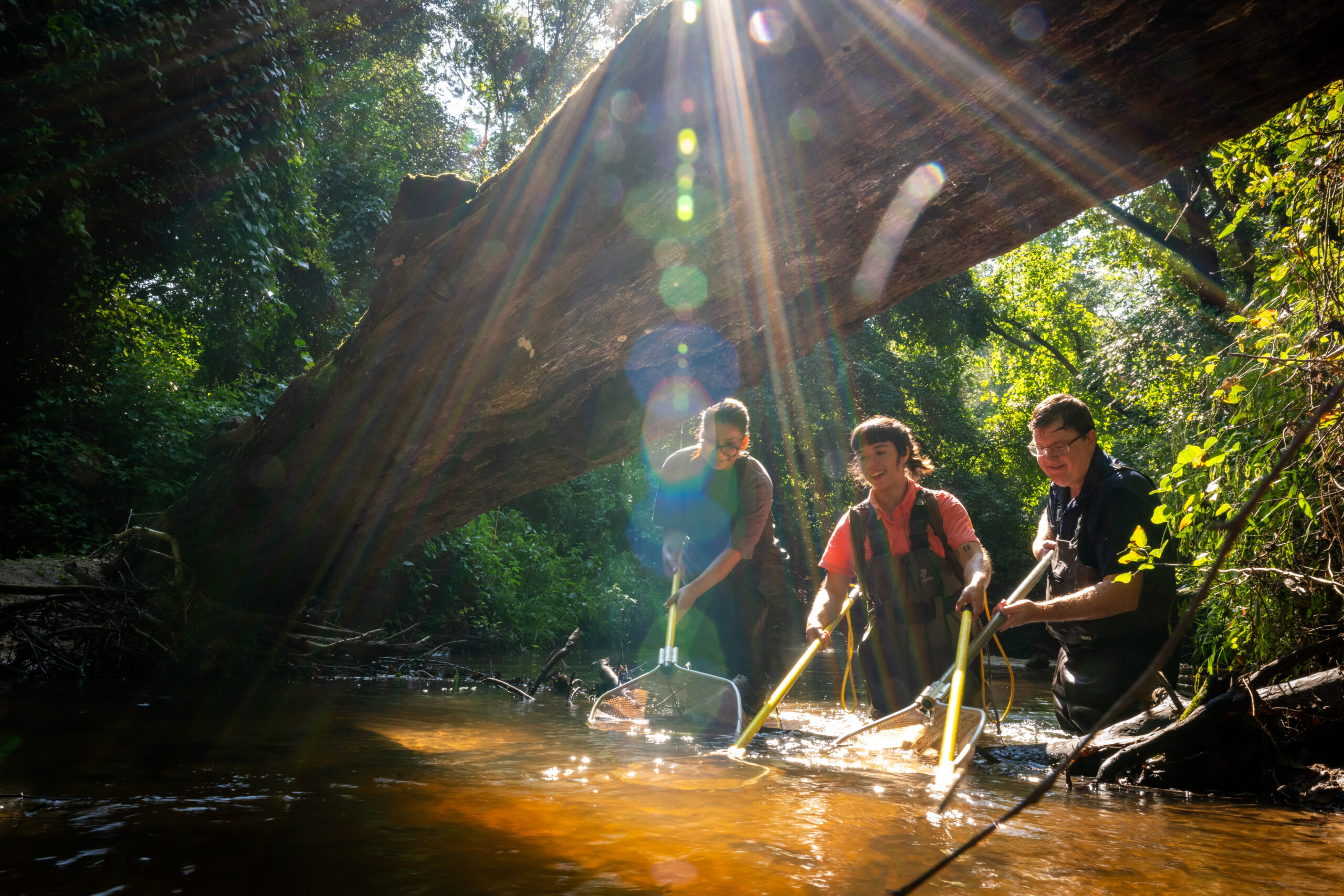
From Classroom to Creek: East Texas A&M Students Study Elusive Painted Crayfish
A rare crayfish offers unique opportunities for discovery and conservation.
If, by chance, you find yourself driving along a winding county road in Northeast Texas, perhaps near Little Cypress Creek or along the wooded shore of Caddo Lake, there is a fair chance you may happen along a band of researchers from East Texas A&M University.
You may not see them, however, unless you have a keen eye, and unless you're brave enough to look away from that winding road long enough to find them. You may see their truck—with the East Texas A&M logo stenciled prettily on the door—but the researchers will be difficult to spot.
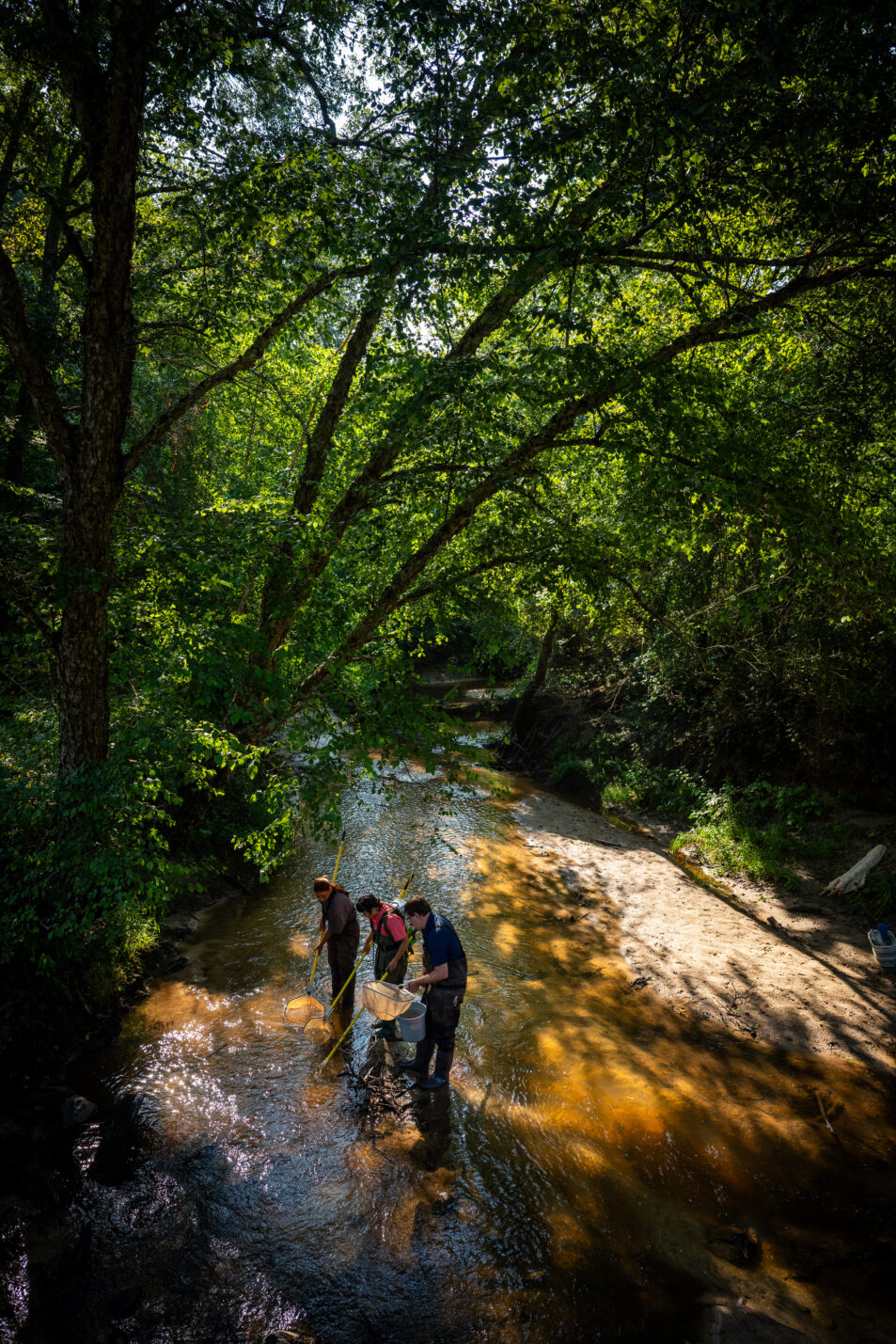
They are beyond the tall grass at the roadside, and beyond the tangle of vines after that. To see them you may have to climb over rocks slick with water and moss. You may have to navigate downed trees as the sound of locusts and songbirds fill your ears. You may have to walk along sandy banks and through the cool muddy waters of a creek that bends like a long, slithering snake. And, yes, watch out for those snakes!
If you do all that, you may, indeed, come across Dr. Bjorn Schmidt, assistant professor in the Department of Biological and Environmental Sciences, along with one or more of his students. They'll be wearing waders up to their chests and carrying nets and buckets. One of them will be wearing a big electrical device on their back, something that looks like it should be in a movie about ghost busting.
The team of researchers are looking for the Kisatchie painted crayfish, and that kind of research requires them to get dirty.
Pausing his explorations along wild creek bottoms, Dr. Schmidt took a moment to discuss the painted crayfish and what he hopes to accomplish through his research.
First things first—you called them “crayfish” instead of “crawfish”—is there a difference?
They go by a lot of names—crayfish, crawfish, crawdad, mudbug—but they all mean the same thing. There's no official rule about which is correct. In general, “crawfish” tends to be used more in everyday language, especially when people are talking about food, while “crayfish” is more common in scientific writing or when referring to them in their natural habitat. Both are correct, though, and most people recognize “crawfish” more readily.
What are the physical characteristics of the painted crayfish?
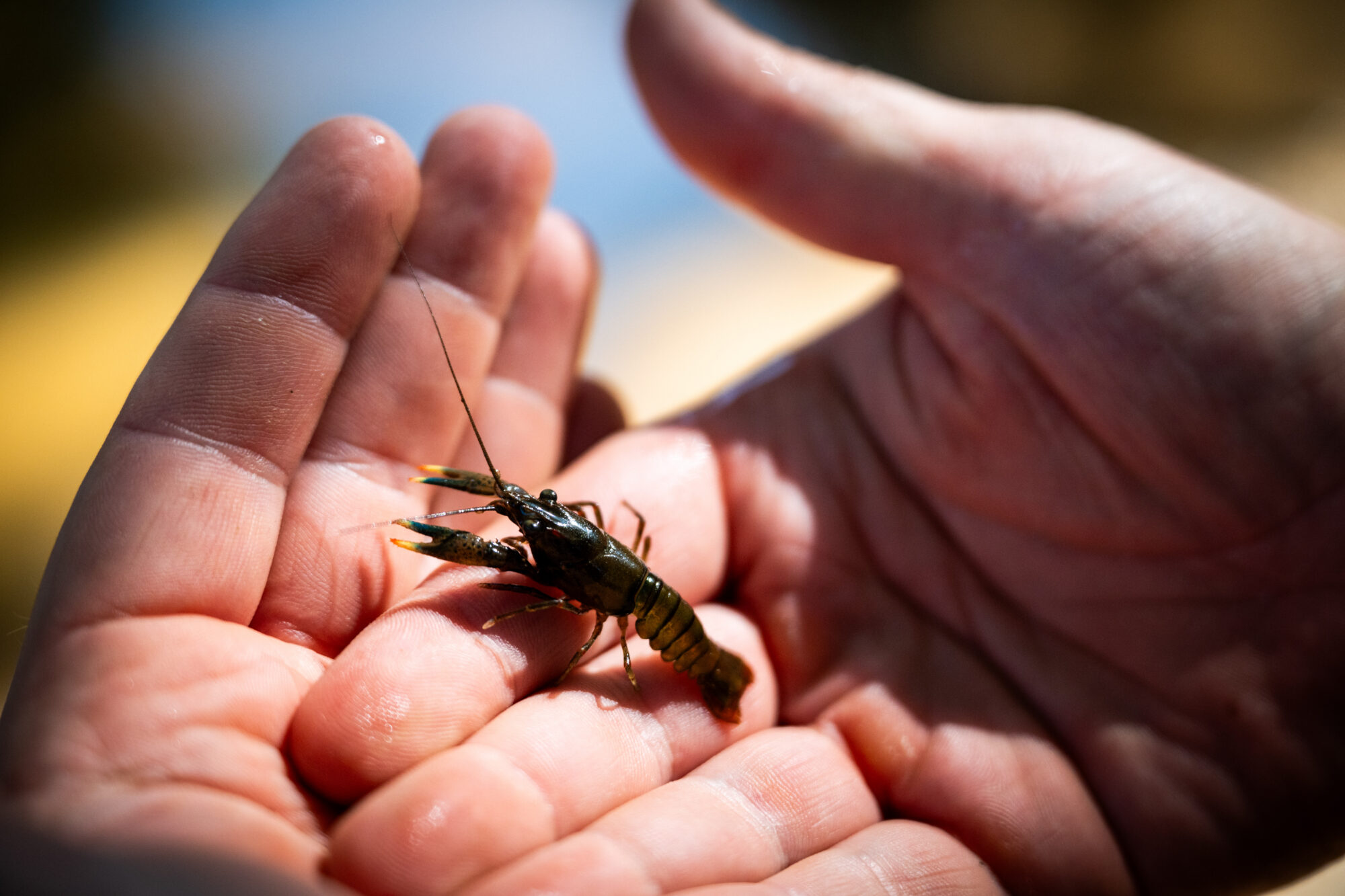
Painted crayfish have an olive-colored exoskeleton with distinctive red markings on their appendage joints and behind their eyes, which make it look like someone painted them by hand.
Their claws are strikingly colored blue, white and red from base to tip, resembling a Bomb Pop popsicle. Juveniles are small, about one to two inches, but adults can reach four inches in length. They're neither the largest nor the smallest crayfish in the region, but their unique coloring makes them stand out.
What sparked your interest in studying the painted crayfish, and why is the species important to conserve?
My interest comes from a long background in freshwater fish conservation, about 20 years of working with rare and imperiled species. Studying crayfish was a natural shift because many of the same techniques used for fish apply. The painted crayfish is especially fascinating because it has only two populations: one in Texas and one in Louisiana, and we don't fully understand why they're separated. Part of our study focuses on genetics to see how distinct these populations are and how long ago they diverged.
This species is important to conserve because aquatic species in general—fishes, crayfishes, mussels—have been declining regionally and globally due to changes in water use, land use and habitat over the past several decades. The painted crayfish is considered imperiled (G2 on the NatureServe scale, where G1 is critically imperiled and G5 is secure). Its populations are small, limited and threatened, yet it remains data deficient, meaning there's still a lot we need to learn to guide effective conservation.
Is there any consensus about the cause of low population among the painted crayfish?
There's no clear consensus on why populations are low because the species is elusive and hard to study. That's part of why this research is important. We're analyzing water chemistry, pollution levels—especially from agricultural runoff—and habitat conditions to better understand the decline.
A 2021 study surveyed 74 sites in Texas but found only 13 crayfish, and they were absent from about 60% of their historical range. This indicates both a shrinking range and declining population, which is why the U.S. Fish and Wildlife Service is considering petitioning them for endangered species status in 2026.
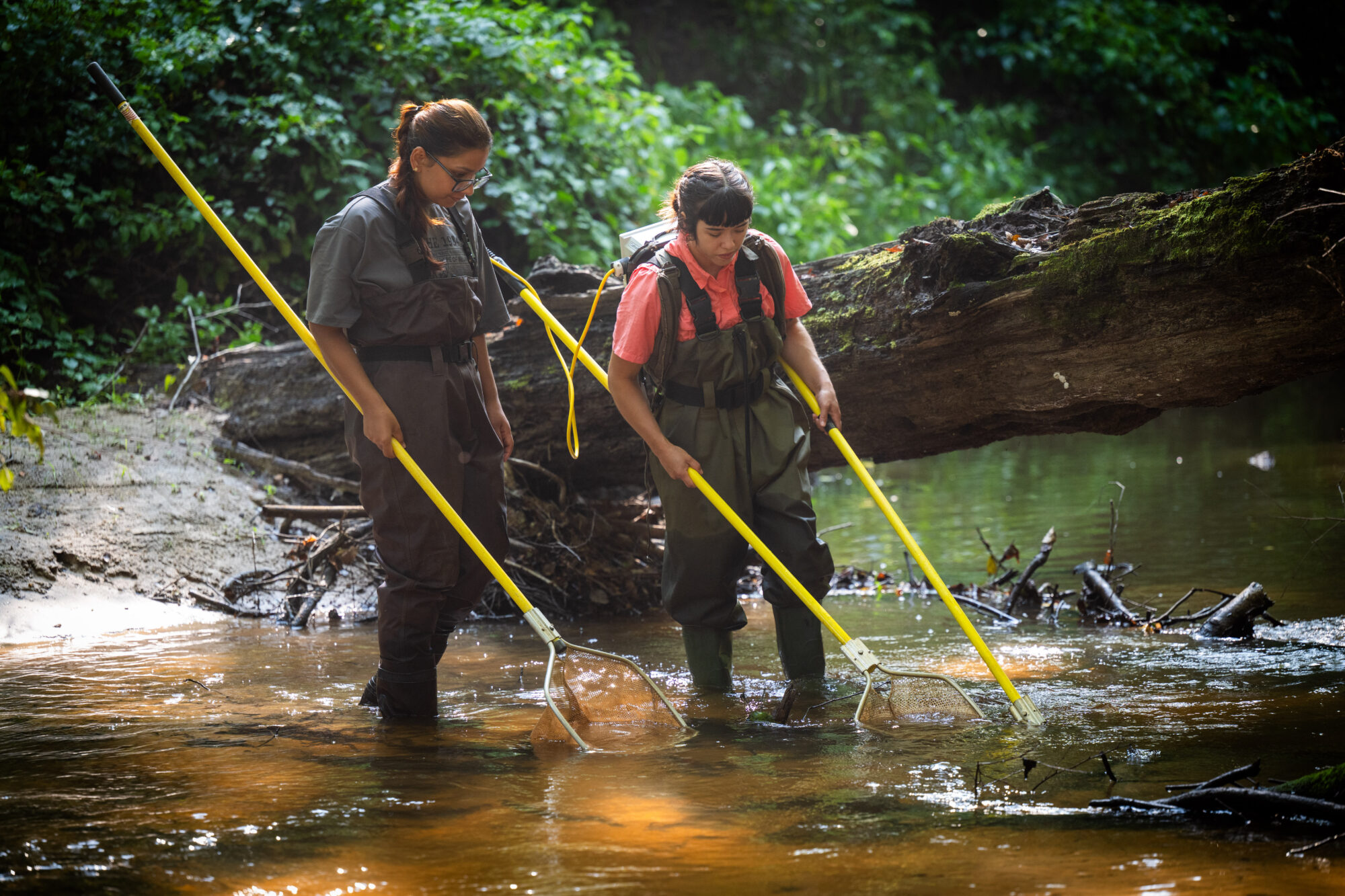
Their decline signals broader environmental issues, including decreased water quality and biodiversity. Early findings suggest that dams, siltation and changes in flow patterns are reducing the amount of suitable habitat, particularly the larger, sandy streams the species prefers. Agricultural runoff also appears to be affecting water quality in these systems.
Why is the Cypress Creek system so critical to the survival of this species?
The Cypress Creek system is critical because it's one of only two places in the world where Kisatchie painted crayfish are found. It's also an ecologically important system for Texas—Caddo Lake, fed by Cypress Creek, supports a diverse range of species, including birds, paddlefish, and alligator gar, making the health of these waters crucial for regional biodiversity.
So far, painted crayfish are mainly found in larger rivers, which limits their distribution. Dams and reservoirs have further reduced suitable habitats. Cypress Creek has three tributaries—Big Cypress, Little Cypress, and Black Cypress. Historically, crayfish were found in all three, but recent surveys only located them in Big Cypress. Our research has confirmed their presence in Little Cypress at ten sites, which is encouraging. Unfortunately, they appear to be gone from Black Cypress.
How do you go about catching painted crayfish?
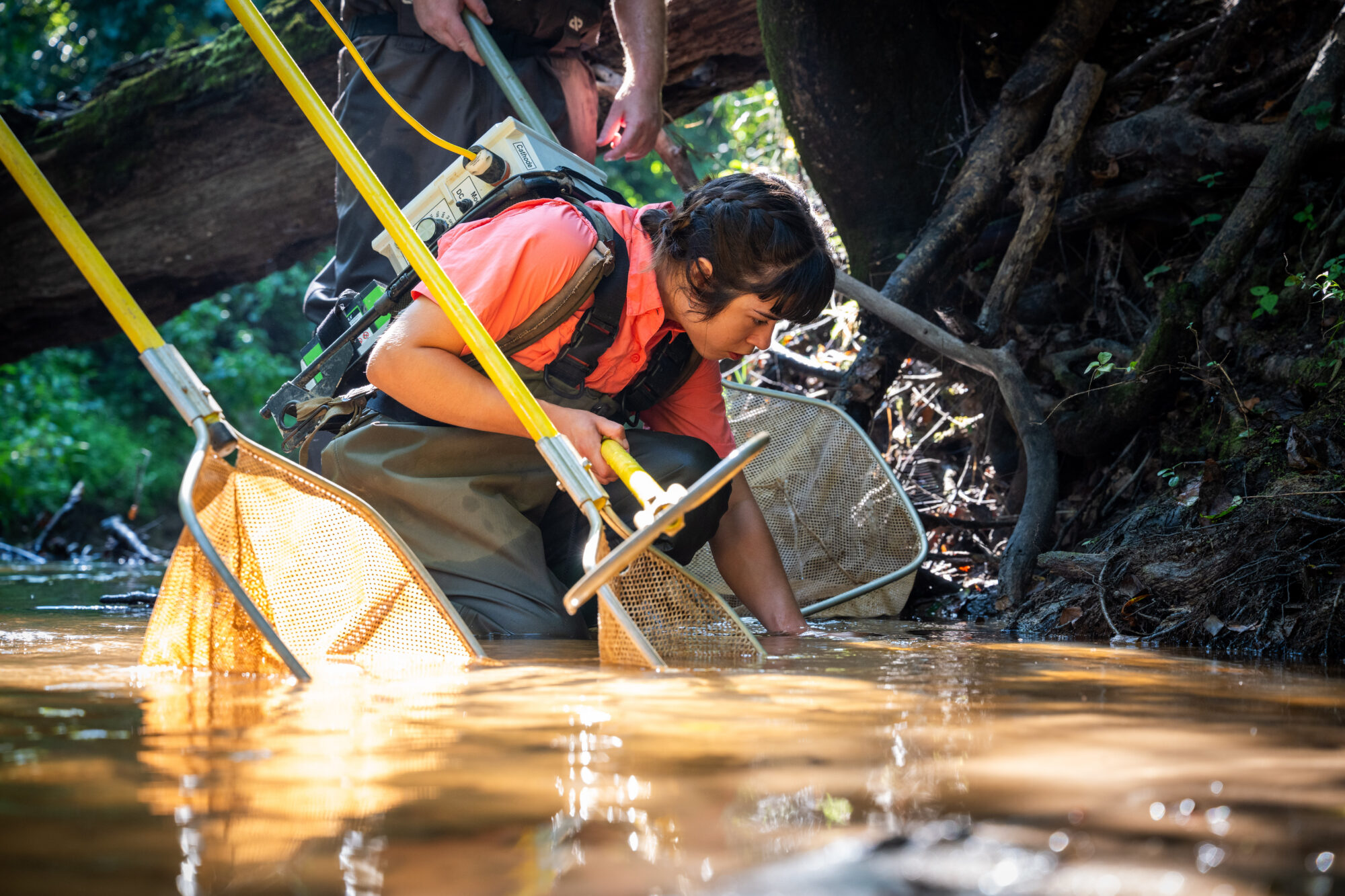
We catch painted crayfish using backpack electrofishing, a technique borrowed from fisheries research. It involves a battery-powered backpack that sends a mild electrical current between two poles into the water. The current temporarily stuns fish so they can be caught and identified, then recover within about 30 seconds.
Crayfish react differently—they dart away rapidly when shocked. Our most effective method is a three-person team: one person operates the backpack, while two others stand on either side with nets to catch the crayfish as they bolt from rocks or cover. It's fast-paced and requires quick reflexes, but so far we've caught about 1200 crayfish for the project, with only some of those being painted crayfish.
With that method of catching crayfish, do y'all often run into other forms of wildlife?
Absolutely. We see turtles, snakes—including cottonmouths—and fish, as well as various aquatic invertebrates. As we get closer to Caddo Lake, there's also potential to encounter alligators, though they usually avoid faster-flowing rivers. Before entering the water, we always survey the area for signs of alligators to stay safe.
How are you evaluating the impact of water chemistry, pollutants and habitat conditions on crayfish?
We do that by collecting environmental data alongside our biological surveys. Once we have all the data, we'll use statistical models to analyze correlations between water quality patterns and crayfish occupancy and abundance. This will help us understand how environmental factors influence their populations.
What role do your students play in the research, and how has this project contributed to their learning?
My students play a crucial role in this research, both in fieldwork and in data analysis. I have two graduate students in biology completing theses related to the project. One is studying the relationship between crayfish populations and fish predators, particularly largemouth bass, which are voracious crayfish predators. Anecdotally, we've noticed fewer crayfish where bass are abundant. The other graduate student is examining habitat patterns, including stream size, flow and depth, to better understand the ecological requirements of the species.
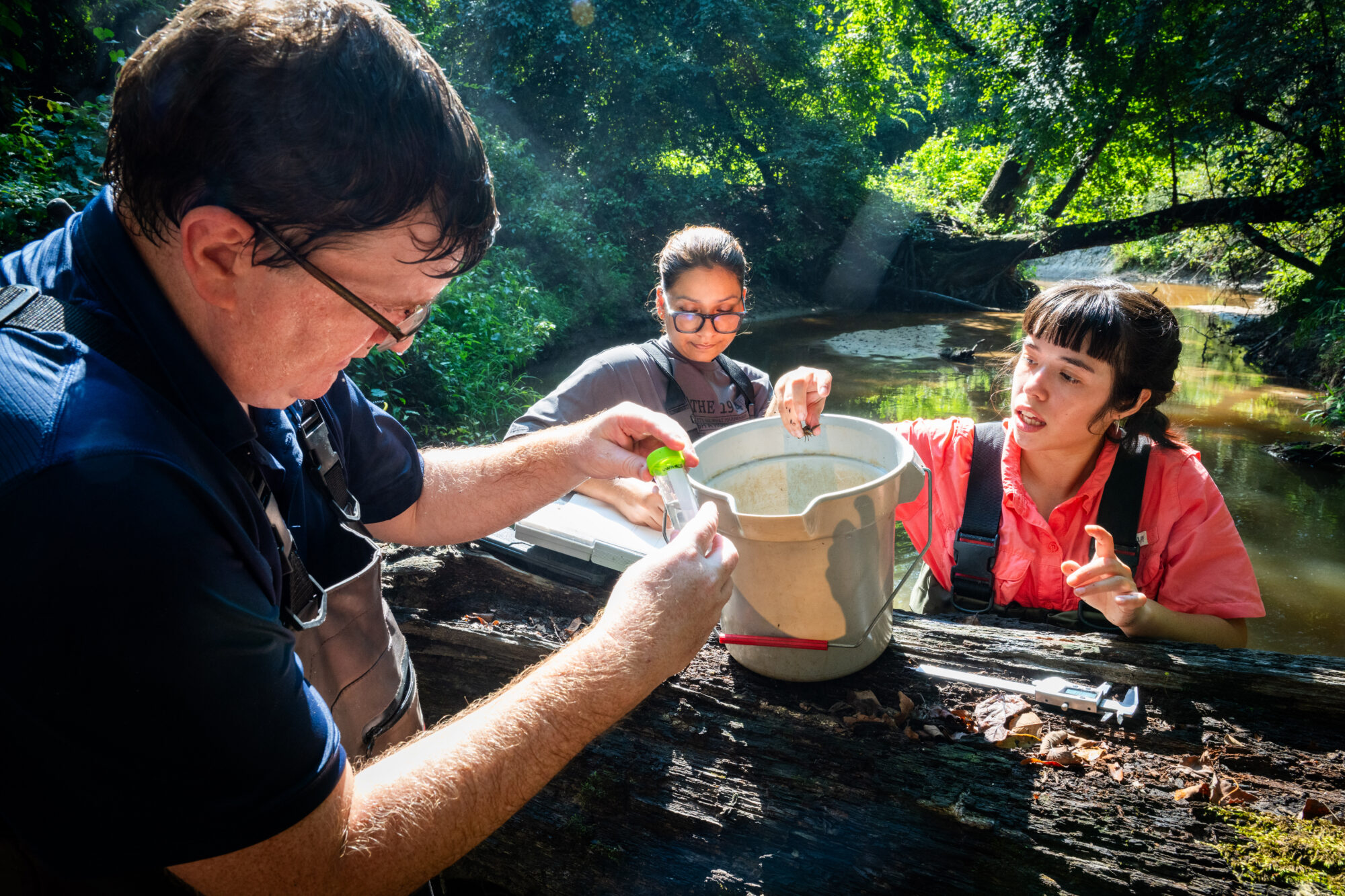
We also have an undergraduate in wildlife conservation who assists with fieldwork, bringing prior experience with backpack electrofishing and local knowledge of the region. Overall, the students gain hands-on experience in field techniques, species identification, trapping methods, and working with aquatic ecosystems. Their work not only supports the research but also prepares them for future careers in conservation and wildlife management.
What are you hoping the impact of this study will ultimately be?
The main goal of this study is to help conserve the painted crayfish. We aim to identify threats causing population declines and raise awareness about the species. Many locals remember seeing the crayfish as kids, but overall, awareness is low. By providing solid data and highlighting its ecological importance, we hope to support long-term protection and ensure the species remains stable, since it exists in only this one region of the world.
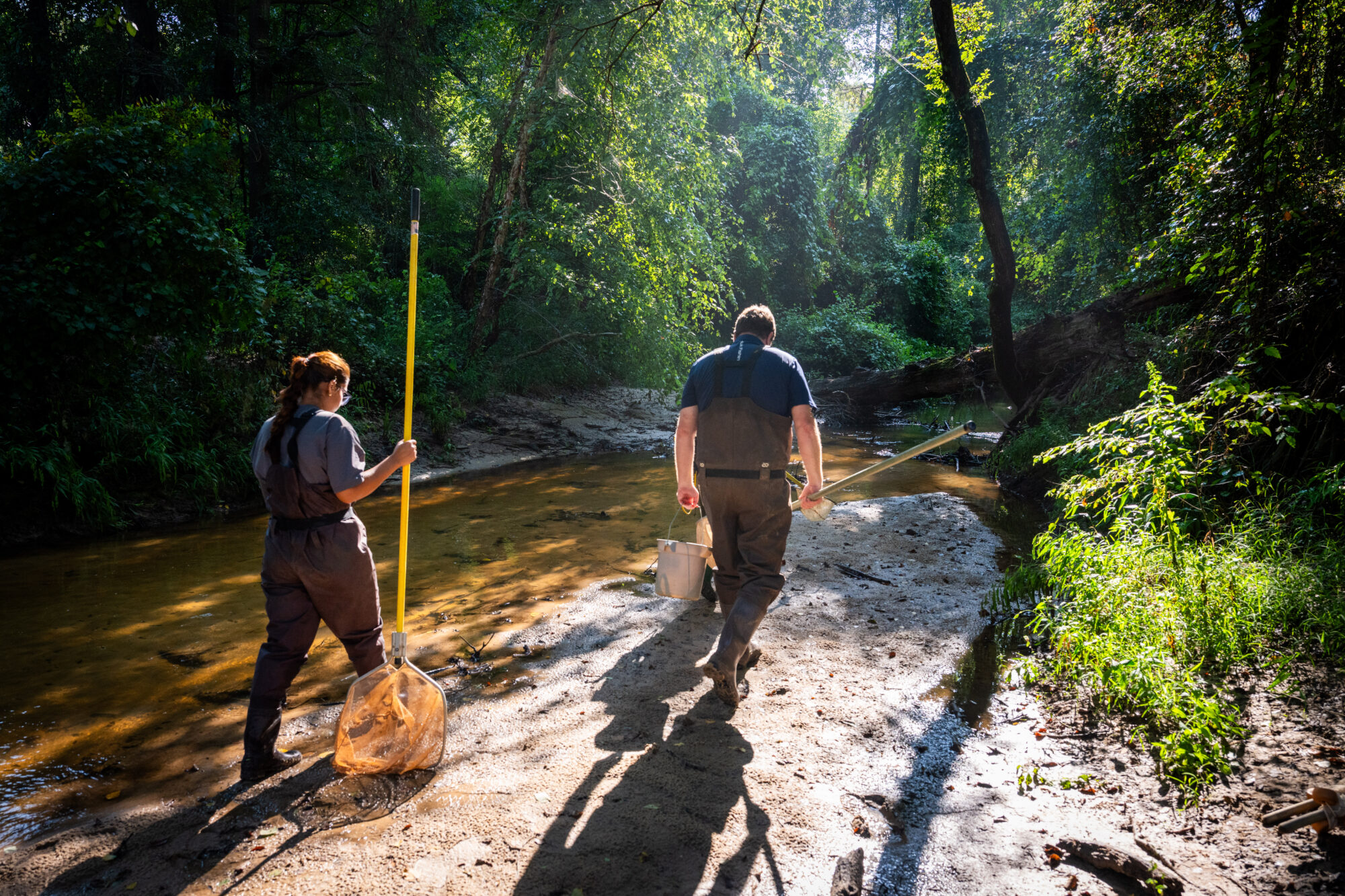
The important research Dr. Schmidt is conducting with East Texas A&M has drawn interest from several students, and they bring their own perspectives and goals to project.
“I feel overjoyed each time we catch the crayfish,” said Rakshya Basnet, a graduate student majoring in biology. “They're very active compared to other fish species, which makes the work both interesting and challenging, and keeps the fieldwork engaging.”
Sielo Garcia, also a graduate student majoring in biology, said studying crayfish will give her a leg-up on her future career.
“Working with crayfish now is giving me tons of experience with a rare species, identifying native fish and crayfish, doing field work, and learning how management and conservation plans get developed,” she said. “These are all things I'd love to continue in my career.”
The painted crayfish study highlights East Texas A&M's dedication to advancing scientific research while training the next generation of environmental scientists. By combining hands-on fieldwork with meaningful conservation projects, the university demonstrates its commitment to addressing real-world ecological challenges and fostering innovation in the biological and environmental sciences.


